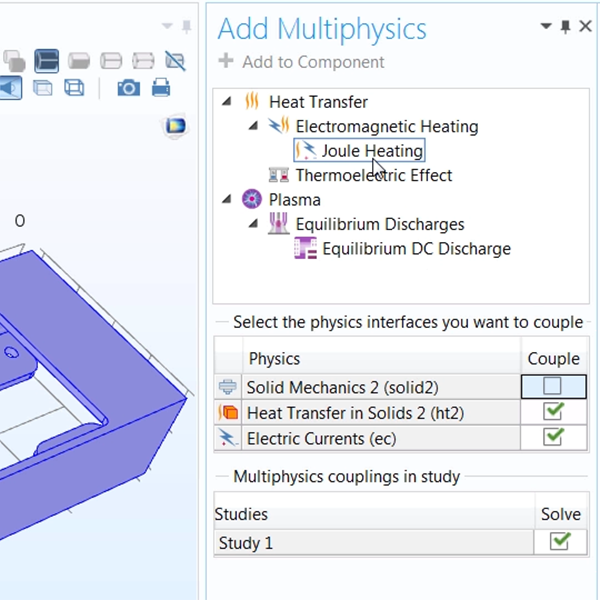Getting Started with COMSOL Multiphysics®
Learn How to Use COMSOL Multiphysics® at Your Own Pace
Physics / Adding Multiphysics
Add and define physics for a multiphysics model. Duration: 28:38At a certain point in the modeling workflow, you need to define the physics settings of a model. When working with a model that includes multiple physical phenomena, this requires choosing a physics interface, applying material properties, boundary conditions, and combining physics phenomena, among other tasks. In the COMSOL Multiphysics® software, there are several modeling approaches you can use to efficiently add multiple physical phenomena.
It is strongly recommended to use the COMSOL® software's predefined multiphysics interfaces to define the physics in a multiphysics model. Multiphysics interfaces are available in several different application areas and disciplines and enable you to quickly add and set up the physics interfaces in a model. Additionally, the built-in multiphysics interfaces include optimal settings for discretization and computation of the physics by default.
Another way to add the physics to a multiphysics model is with the manual approach using predefined couplings. You can add and set up each individual physics interface in a separate study, combine the physics, and solve the full multiphysics problem. This approach enables you to troubleshoot and validate the results of each physics setup separately before solving them in tandem.
In this video, we will show you how to add the physics for a multiphysics model using these two approaches. Additionally, we will discuss the advantages and benefits of each approach.
Video Playlist
Physics
Videos: 2
-
Introduction
-
User Interface
-
Geometry
-
Definitions
-
Materials
-
Physics
-
Mesh
-
Study
-
Results
-
Application Builder

